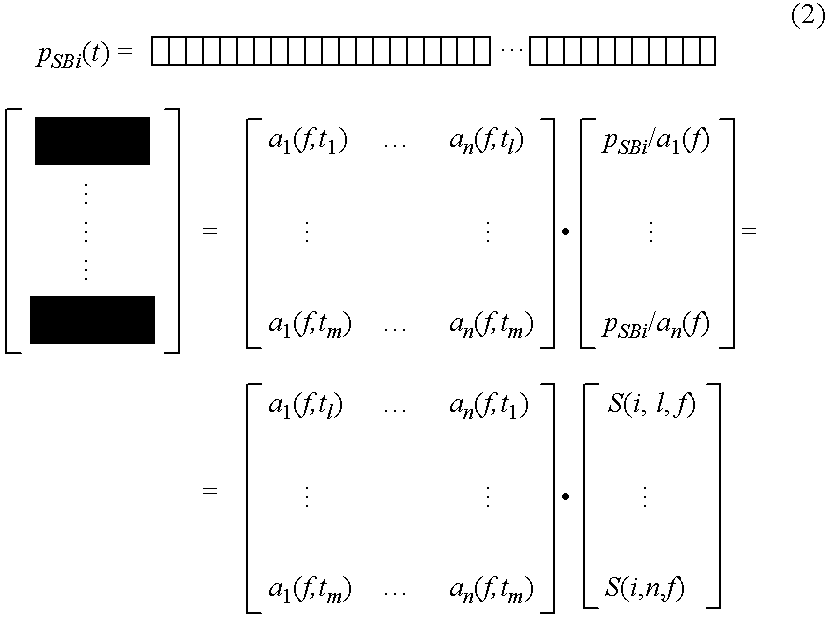Method for determining the contributions of individual transmission paths
a transmission path and individual technology, applied in the direction of instruments, pressure difference measurement between multiple valves, inflated body pressure measurement, etc., can solve the problems of sensitivity function and inertance errors, and achieve the effect of rapid and accurate computation of forces
- Summary
- Abstract
- Description
- Claims
- Application Information
AI Technical Summary
Benefits of technology
Problems solved by technology
Method used
Image
Examples
Embodiment Construction
[0038]The invention will now be explained in more detail with reference to an example.
[0039]To enable deeper understanding of the method of the invention a stepwise description of the theory will now be given. To reduce complexity the example below contains only receiving positions for air-borne sound in the cabin. Thus the computations involve only sound pressure and no accelerations at the receiving positions. Computation with accelerations could be carried out identically. If both accelerations and sound pressures at the receiving positions are to be used scaling of the matrices should be considered.
[0040]For more detailed explanation sound pressure ptot at the target microphone may be split into a structure-borne component pSB and an air-borne component pAB, as shown in equation (1):
ptot=pSB+PAB (1)[0041]ptot . . . total sound pressure[0042]pSB . . . structure-borne part of sound pressure[0043]pAB . . . air-borne part of sound pressure
[0044]Step 1.1—Determination of the Accele...
PUM
 Login to View More
Login to View More Abstract
Description
Claims
Application Information
 Login to View More
Login to View More - R&D
- Intellectual Property
- Life Sciences
- Materials
- Tech Scout
- Unparalleled Data Quality
- Higher Quality Content
- 60% Fewer Hallucinations
Browse by: Latest US Patents, China's latest patents, Technical Efficacy Thesaurus, Application Domain, Technology Topic, Popular Technical Reports.
© 2025 PatSnap. All rights reserved.Legal|Privacy policy|Modern Slavery Act Transparency Statement|Sitemap|About US| Contact US: help@patsnap.com



